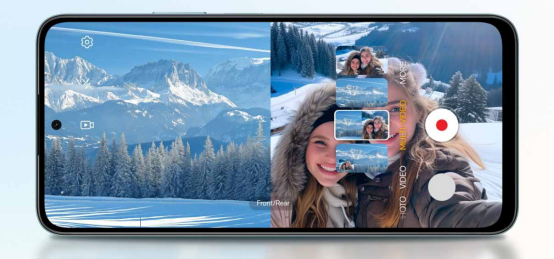Capturing moments has become a ubiquitous activity in the contemporary world, owing to the proliferation of smartphones equipped with increasingly advanced cameras. Yet, traditional cameras continue to hold their ground, offering unique features and capabilities. Let's delve into the divergences between capturing images with a phone versus using a dedicated camera.
Phone Photography vs. Traditional Cameras
Image Quality and Resolution
One of the most palpable distinctions lies in the image quality and resolution. While modern smartphones boast impressive camera specs, traditional cameras, particularly DSLRs and mirrorless cameras, tend to have larger sensors and more sophisticated lenses. This often translates into sharper details, better dynamic range, and superior low-light performance, providing photographers with greater flexibility in post-processing and printing.

Manual Control and Creativity
Another notable contrast is the level of manual control and creative freedom offered by each device. Traditional cameras typically provide extensive manual settings, allowing photographers to fine-tune exposure, aperture, shutter speed, and focus to achieve their desired effects. This hands-on approach fosters a deeper understanding of photography fundamentals and encourages experimentation, resulting in more nuanced and personalized compositions.
Portability and Convenience
In terms of portability and convenience, smartphones undeniably take the lead. With their compact size and seamless integration into everyday life, they offer unparalleled accessibility, enabling users to capture spontaneous moments anytime, anywhere. Moreover, smartphones simplify the process of sharing photos instantaneously via social media platforms, eliminating the need for additional devices or cumbersome transfer procedures.
Versatility and Specialization
While smartphones excel in versatility, traditional cameras often cater to specific photography niches and professional requirements. For instance, DSLRs are favored by landscape and portrait photographers for their exceptional image quality and interchangeable lens systems, while mirrorless cameras appeal to enthusiasts seeking a balance between compactness and performance. Additionally, specialized cameras like medium format and action cameras serve distinct purposes, offering unparalleled image fidelity or rugged durability, respectively.
Ergonomics and Handling
Ergonomics and handling represent another facet where traditional cameras diverge from smartphones. Designed with ergonomics in mind, cameras feature sturdy grips, tactile controls, and viewfinders that enhance stability and facilitate precise adjustments, especially during extended shooting sessions. Conversely, the slim form factor of smartphones may compromise comfort and control, particularly for users with larger hands or those accustomed to the tactile feedback of physical buttons.
Learning Curve and Accessibility
When it comes to the learning curve and accessibility, smartphones hold a significant advantage. Their intuitive interfaces and automatic shooting modes cater to beginners, allowing them to capture compelling images with minimal effort. In contrast, mastering the intricacies of traditional cameras demands dedication and practice, as users navigate a myriad of settings and techniques to unleash their full creative potential. The HONOR X7b 5G features a rear triple-camera setup, consisting of a 108MP main camera, a 2MP macro camera, and a 2MP depth camera. Whether capturing landscapes or snapping selfies, it can fulfill users' needs.

Conclusion
In the realm of photography, the choice between a phone and a traditional camera ultimately boils down to individual preferences, priorities, and intended use cases. While smartphones offer unmatched convenience and connectivity, traditional cameras deliver unparalleled image quality, manual control, and specialization. Whether you're a casual enthusiast capturing everyday moments or a seasoned professional pushing the boundaries of creativity, understanding the differences between these two tools empowers you to make informed decisions and elevate your photographic endeavors.
